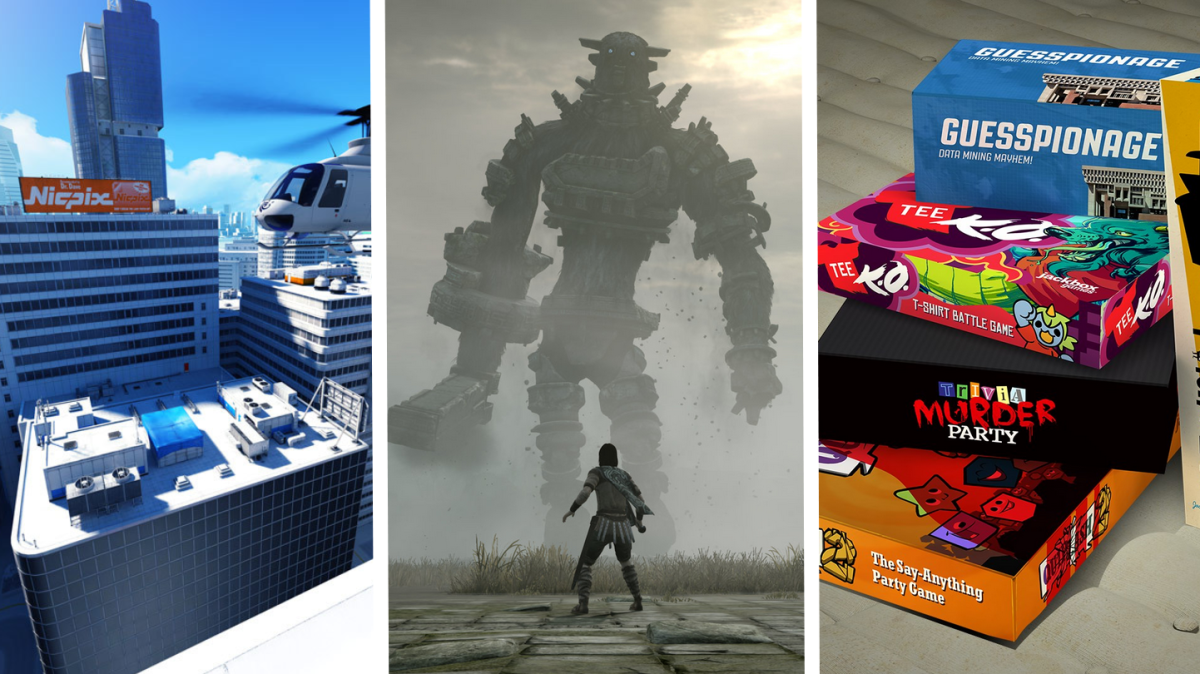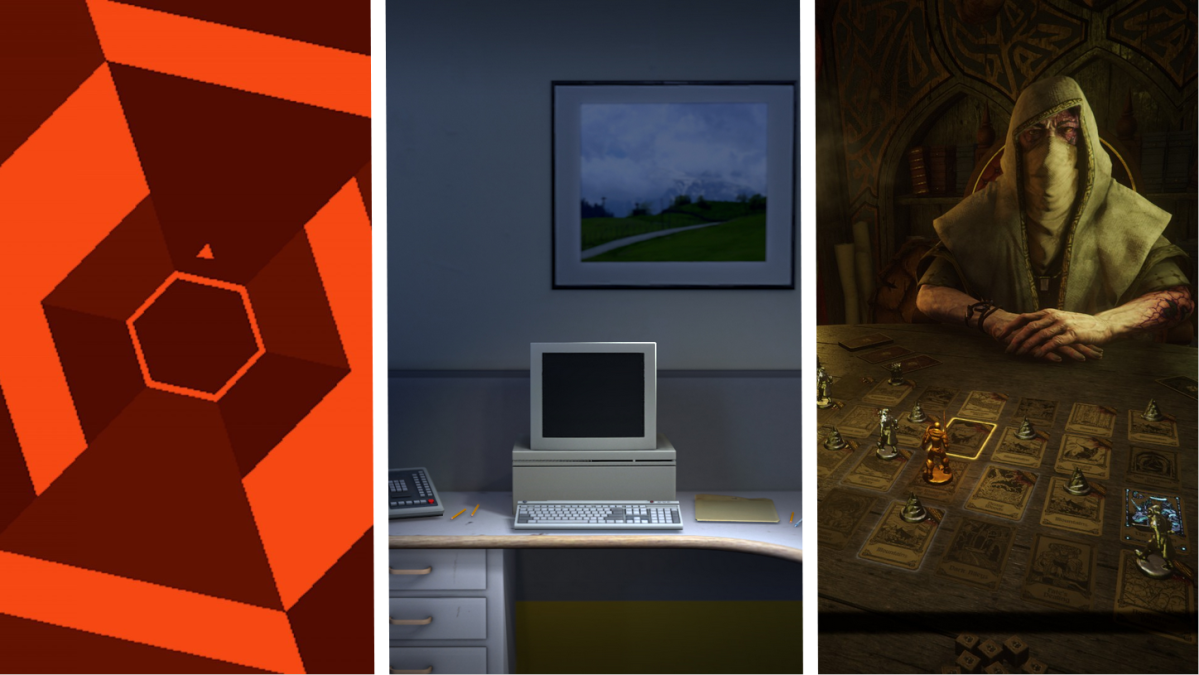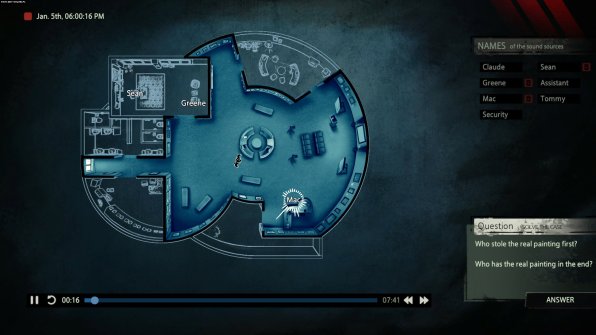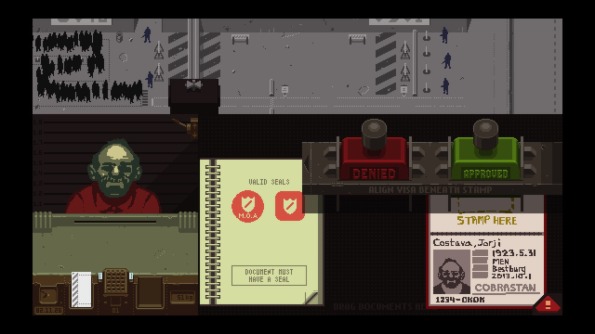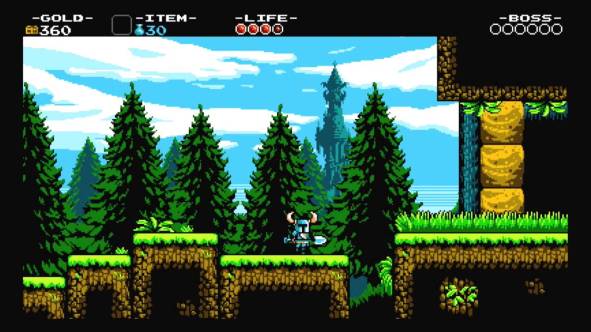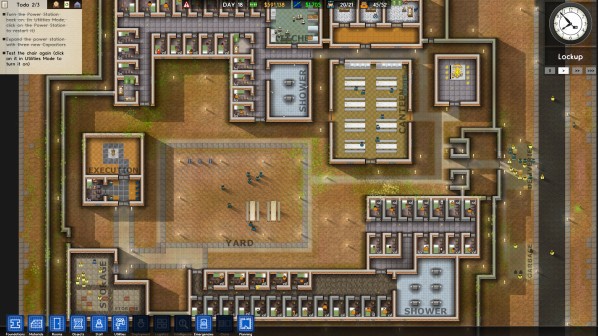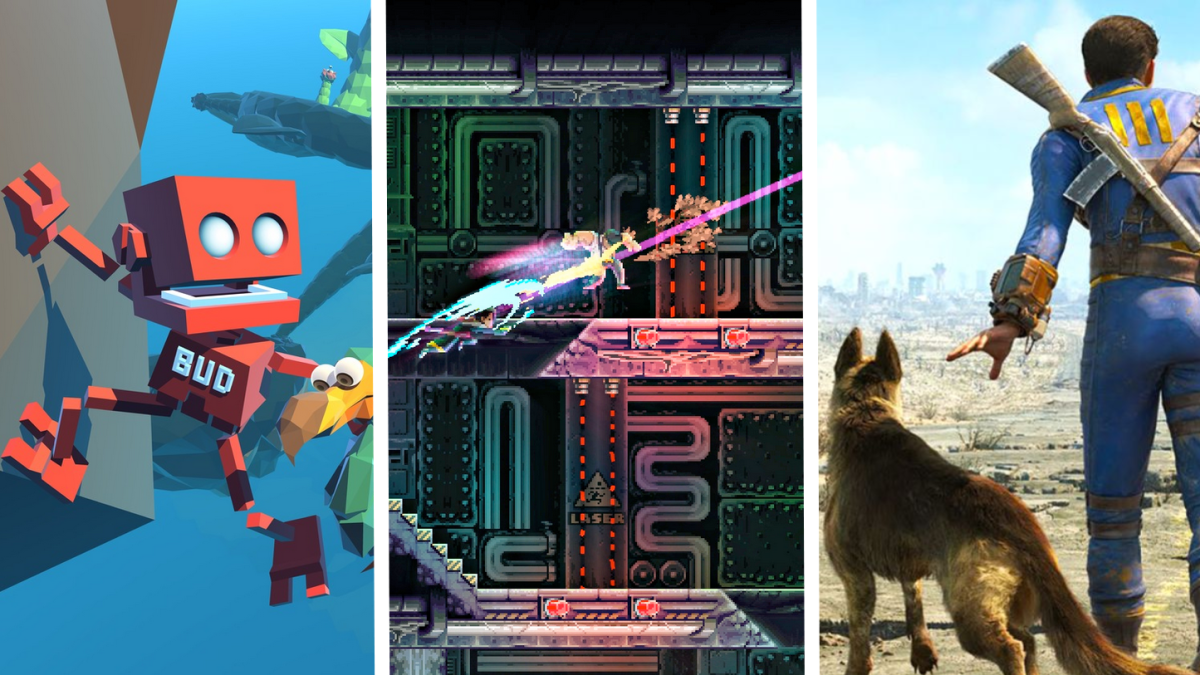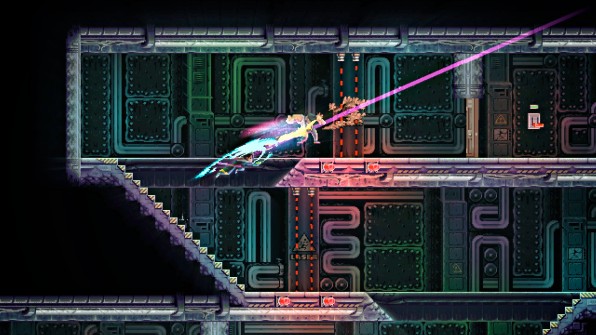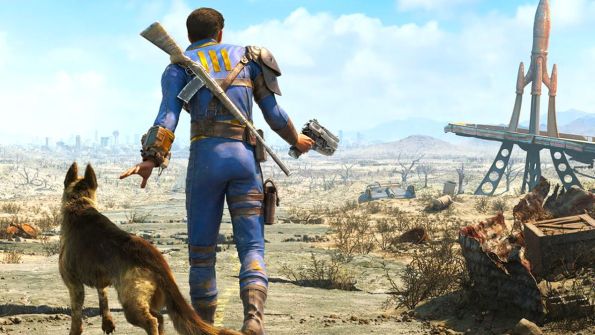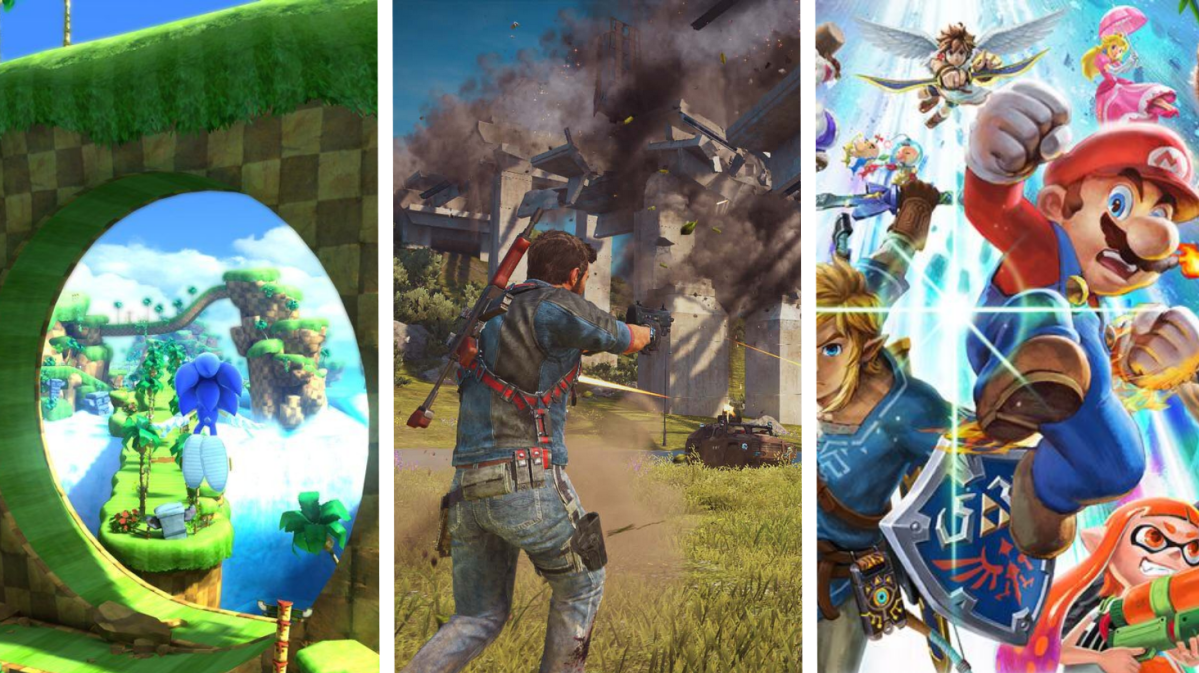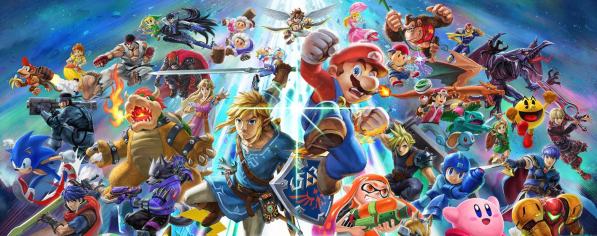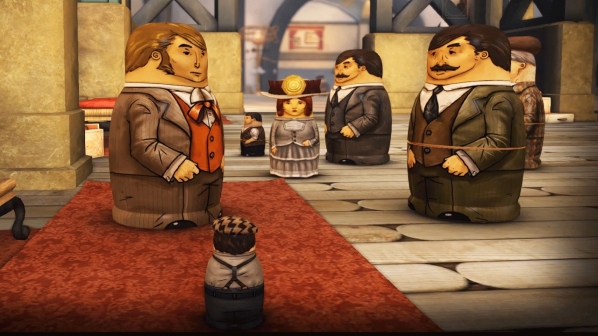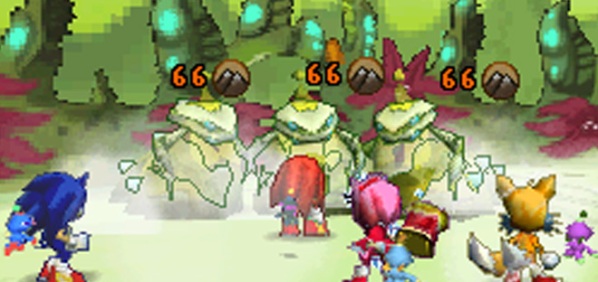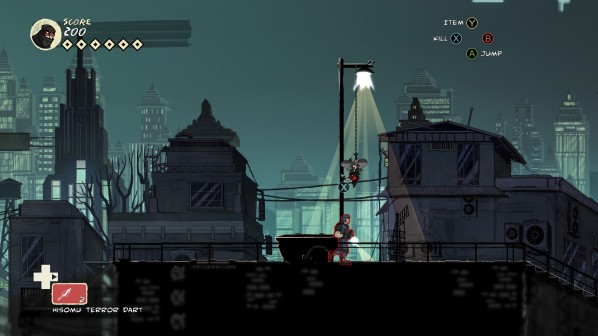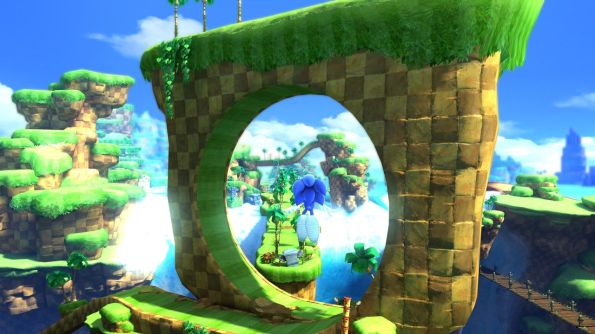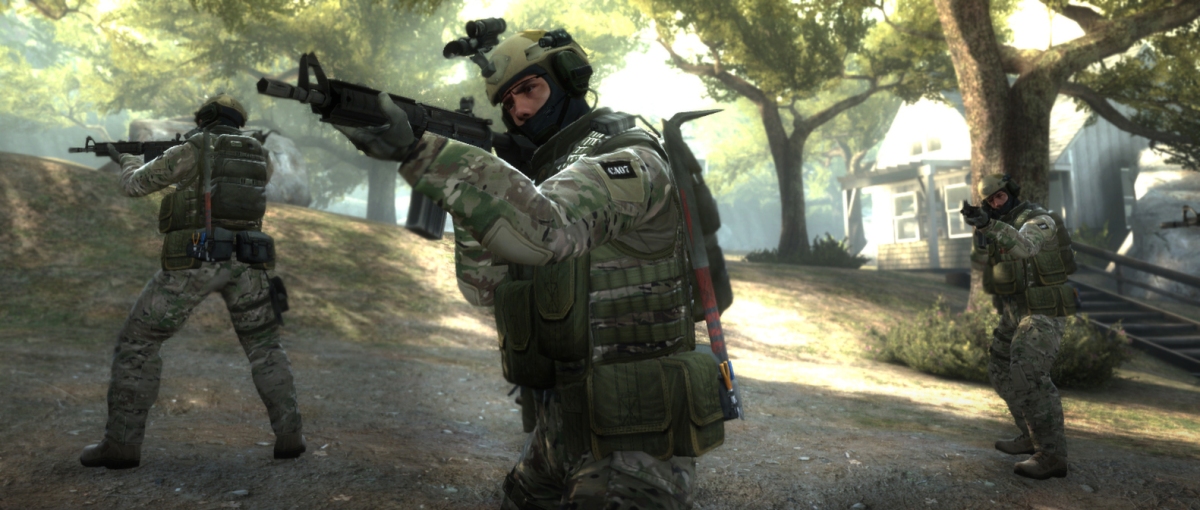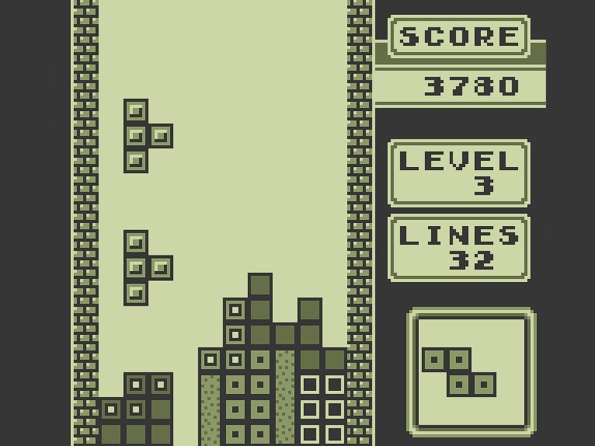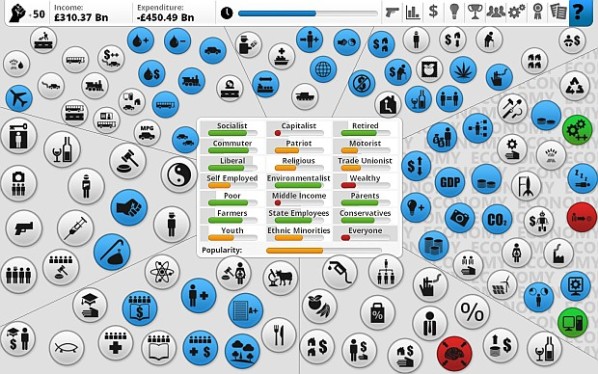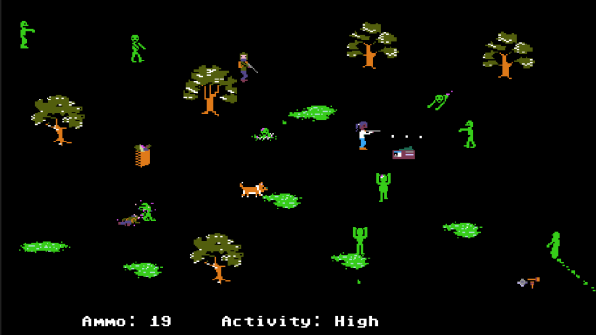Welcome back to my 100 favourite games of all time series! We’re over the half-way mark now, and the games just keep getting better. Today, it’s entires 50 through 41.
If you haven’t read the previous instalment in this series, please do so here, and here’s the first entry if you want to start from the entry 100.
SPOILER WARNING!
Just a heads up that there will be full SPOILERS for every game I’m going to talk about in this series, so be careful if I talk about something you don’t want spoiled.
Let’s not waste any more time!
50 – Sonic The Hedgehog 3 & Knuckles

Release Date: 2nd February 1994
Developer: SEGA
Publisher: SEGA
Platforms: SEGA Genesis, Windows
Metacritic Average: 79%
It’s a game about going fast.
Although I’ve grown an appreciation for Sonic’s red, plumber rival in recent years, nothing in the 2D platforming genre will ever be able to compete with the fastest thing alive for me. All three of the original Sonic 2D platformers could have conceivably made the list, but in the end, I decided to go for the combo of Sonic 3 & Knuckles because I feel it’s where the formula reached its peak for that era of Sonic games.
The momentum-based gameplay was down to a science by this point in the series, which meant that the development team were able to churn out more high-quality levels in a shorter timespan and that really showed when you combo these two games together. Most of my favourite zones from the whole Sonic franchise live in this game (Ice Cap, Lava Reef, Carnival Night) and that’s down to the fact that everything in the game felt so fantastically smooth in terms of the platforming.
Everything in the Sonic toolbox comes together so well in this game. It clearly had the staying power too, otherwise, the franchise wouldn’t have been able to endure for so long following so many crap games in the franchise following this one.
49 – Shadow of the Colossus
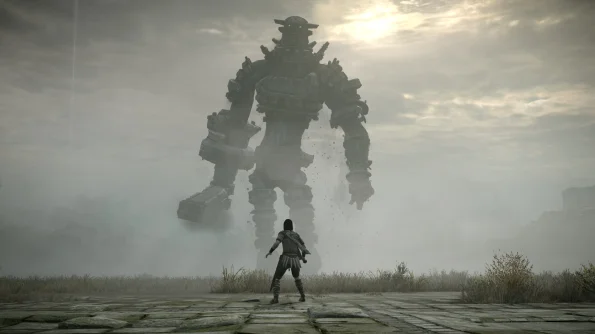
Release Date: 18th October 2015
Developer: SCE Japan Studio, Team Ico
Publisher: Sony Computer Entertainment
Platforms: Playstation 4, Playstation 3, Playstation 2
Metacritic Average: 91%
It’s a game about slaughtering harmless creatures that also happen to be skyscraper-sized monsters.
(From my Favourite Old Games That I Played for the First Time in 2019 article)
I went into Shadow of the Colossus with no small amount of hype behind me. This autumn was the first time I ever owned a Playstation of any iteration, which means there was a big library of exclusives that I’m still slowly working my way through to this day, but the first game I had to try was Shadow of the Colossus. Pretty much every critic/Youtuber/reviewer who’s opinions I value has spent at least some time talking about how brilliant this game is, so I couldn’t wait to try it out for myself.
After finishing it, the best thing I can think of to say about it, it that there is genuinely nothing out there quite like it.
Plenty of games allow you to fight massive monsters, but they’re always so restrictive in how they let you interact with the things. The fights often limit you to a side-on perspective, or just straight up have the fight be almost entirely scripted, that’s not what Shadow of the Colossus does. Not only does it give you complete freedom to tackle each of the Colossus, but it also forces you into that freedom. The game doesn’t baby you in the slightest, the moment when the foot of the first colossus steps into frame, only for the camera to pan up and show you how massive it is was magical. This is all made even more magical when the cutscene ends and, instead of telling you how to fight it like most other game, just leaves you to work it out yourself.
This means that not only is every fight in the game a massive monster that could squish you as soon as look at you but an intelligently designed puzzle that you have to solve so you can climb up onto the thing’s back/head and stab its glowing bits.
The story is minimal, but the whole point of it is to not give you much, and get you to interpret what it’s trying to say. The game sets you up with a straightforward premise, kill the monsters and save the lady; seen it and done it hundreds of times. Then, as the game progresses, you slowly get very subtle hints that maybe what you’re doing isn’t necessarily the right thing. The game makes every battle seem like an epic fight. The music soars in triumph every time you make your way onto the Colossus’ back and yet when you finally kill them, the music changes to be very sombre, framing the death as a tragedy that you’ve murdered this wondrous creature. This leads up to the genius gameplay twist in game’s final segment, where you are transformed and forced to play as one of these giant lumbering beasts. You finally see just how difficult it is to move and attack as one of them, and it makes you realise just how helpless these creatures you’ve spent several hours murdering were.
The core gameplay concept for Shadow of the Colossus was one that could’ve easily been repetitive and boring, but a combination of satisfying climbing & combat; intelligent & varied colossus design; gorgeous looking world design and an unwavering commitment to tone, elevates the game to something genuinely special.
48 – Gunpoint
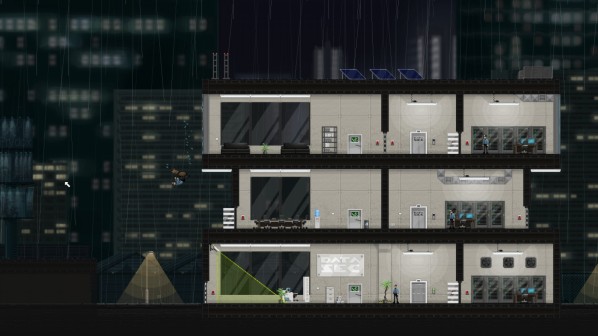
Release Date: 3rd June 2013
Developer: Suspicious Developments
Publisher: Suspicious Developments
Platforms: Windows, Mac, Linux
Metacritic Average: 83%
It’s a game about using lightswitches to fire guns.
Gunpoint is a puzzle game where every single element of the puzzles can interact with each other seamlessly. The rewiring concept would’ve been fun enough on its own, but the game gives you total freedom in what you can wire up to what. You wanna make it so that when a guard fires their gun, it calls the elevator? Sure thing. You want a lightswitch to set the whole building on red alert? No problem. You want to wire literally everything in the building up to everything else in the building so that they all trigger each other and the whole building descends into chaos. Probably giving some poor guard an epileptic fit as you leap through a window and knock him out with one punch? Couldn’t be more simple.
Gunpoint establishes all of its puzzle mechanics very quickly and then just lets you do what you want with them. The levels are designed in such a way that encourages you to experiment with the mechanics to see what works. With quick deaths and quicker respawns, you’re not punished for trying to have fun with the mechanics. The evaluation mechanic at the end of each level rewards you regardless of what play-style you used (provided you did it well). It allows you to be a lord of chaos and trick everyone into killing each other or getting in and out, without anyone even knowing you were ever in the building.
This is a game that has brilliantly designed puzzles, but also made sure that the puzzle mechanics lent itself to fun experimentation and whacky antics if you so chose to go down that route; and do you know what? I think I will.
47 – Spelunky
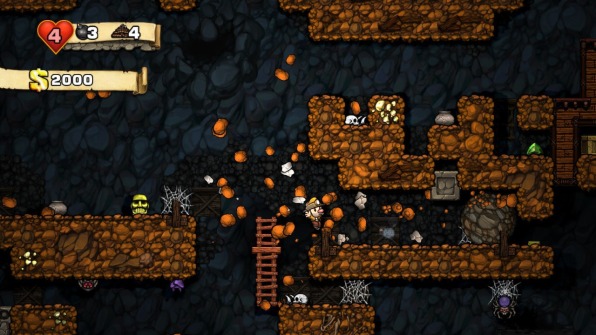
Release Date: 21st December 2008
Developer: Mossmouth LLC
Publisher: Mossmouth LLC, Microsoft Studios
Platforms: Playstation 4, Playstation 3, Playstation Vita, Xbox 360, Windows, Chrome OS
Metacritic Average: 90%
It’s a game about spelunking.
There are plenty of games on this list that nail that “one more go” feeling, but they’re usually rapid games. Things like Super Hexagon that only last around a minute before they chuck you out and have you desperately wanting to go back in again, which is what makes Spelunky so interesting.
As much as you can complete it in almost no time at all if you’re good enough, for a standard player like myself, a single run can take around half an hour (assuming you don’t die in the first few levels), but that is what makes it work. What it means is that the game never runs out of ways to surprise you with brand new stuff. The environments are procedurally generated so that levels never feel the same. Even once you’ve been playing long enough to recognise the patterns in the terrain generation, they always link up in unique ways, showing you new traps, items or enemies almost every time.
No matter how much I play Spelunky (spoilers, it’s a lot), I never feel like I’m good at it. I’m a hell of a lot better at it than I was when I first started playing, but the game never lets you rest on your laurels. This sounds like a complaint, but for a roguelike/roguelite game that’s exactly what I want. I want a game like this to be genuinely unsolvable because that’s what will keep me coming back to it time and time again.
46 – Clustertruck
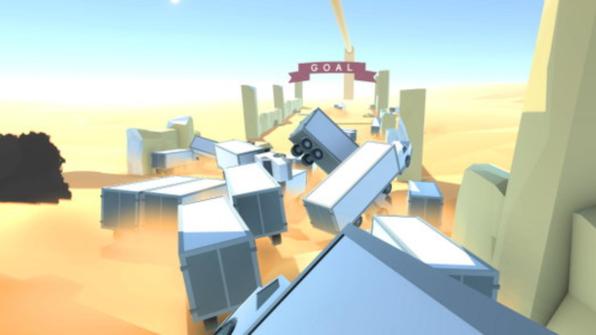
Release Date: 27th September 2016
Developer: Landfall Games
Publisher: tinyBuild
Platforms: Playstation 4, Xbox One, Nintendo Switch, Windows, Mac, Linux, Nvidia Shield TV
Metacritic Average: 76%
It’s a game about leaping between trucks as they get exploderized in various ways.
Clustertruck is an unbelievably simple concept, but one that I never get bored of. This is a game that takes the pure elements of total chaos and manages to distil that feeling into the core mechanic on the game. As you could probably tell by its title, this game doesn’t give a shit about anything other than providing you with absolutely mental fun at all times.
The idea of a “Floor is Lava” game is fun enough in and of itself (just look at 2019’s Hot Lava) but to have your tools to avoid the floor be trucks that speed along at over 100 miles an hour makes the experience all the more exhilarating; and that’s not even mentioning the obstacles. Lasers, Pillars, Lava, Swinging Axes, Massive Cogs, Weird Spinning Pretzel looking things; there’s nothing this game won’t throw at you to try and knock you off your trucks. Discovering what each new level is going to try and throw at you is just as fun as actually trying to complete it.
This is a game that doesn’t need to have any mechanical genius behind it because it’s an absolute blast from start to finish, which is more than enough for me to be happy with it.
45 – Blade & Sorcery
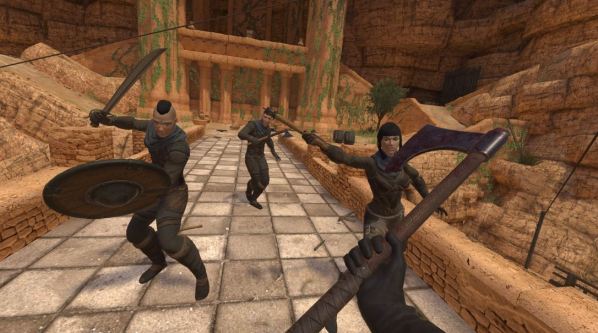
Release Date (Early Access): 11th December 2018
Developer: Warp Frog
Publisher: Warp Frog
Platforms: HTC Vive, Oculus Rift
It’s a game about being a medieval action hero.
I’m honestly getting exhausted just thinking about this game. This is definitely not a VR game for beginners to the platform because it relies pretty heavily on having a decent knowledge of how to get the most out of VR, but once you get into it, there’s nothing that stops you from being the formidable warrior you always dreamed of being. The combat is so weighty in the game, that when I run someone through with a sword, I really feel it. It’s quite gruesome, if I’m being honest, the way that I can feel the resistance as the sword pierces through the body, it’s almost too real. The AI is just the right level for the game since they’re passive enough so that I can mess around with them and do stupid – yet awesome – looking kills, but are also good enough that they can provide a challenge in a straight-up duel.
There was something that clicked in my head as I took a running leap onto a zipline, using my axe to hook onto it, only to release from that zipline, landing on someone and stabbing them in the throat in the process before turning 180 degrees and throwing an axe into another person’s skull all in VR. I just stood there and realised that this is what VR is all about, it’s that empowering feeling that a regular video can’t give you, it’s the ultimate power trip. The only downside is that I can only play it for around 30 minutes at a time before being absolutely exhausted, but that’s not the game’s fault, I’m just unfit.
Ultimately, when I first imagine how cool games in VR could be, something not too far off of Blade & Sorcery is what came to mind and as new stuff is regularly being added (it’s still in early access), it only gets better and better.
44 – Mirror’s Edge

Release Date: 11th November 2008
Developer: EA Dice
Publisher: Electronic Arts
Platforms: Playstation 4, Xbox 360, Nintendo Switch, Windows, iOS, Windows Phone
Metacritic Average: 81%
It’s a game about running and jumping across a city.
Mirror’s Edge is a game that has the strange distinction of not only being a unique concept for its time but also remaining a unique concept to this day, despite being released over a decade ago. In a weird way, it took the same design philosophies as the Sonic the Hedgehog games, with the momentum-based gameplay that elevated the parkour mechanics to have an incredible sense of flow & satisfaction.
What I think made this game feel as great as it was (and one of the key reasons I wasn’t a fan of the sequel) was the linear level design. Each level was so carefully crafted to get the most out of the parkour mechanics, creating that feeling of being someone always on the run from the law. Those sequences where soldiers would be shooting at you from all angles and you could do nothing but run are some of the most exhilarating sequences I’ve ever played in a game.
Mirror’s Edge was a game that knew precisely what it wanted to be and did it to near perfection with a formula that I don’t believe has ever been successfully replicated.
43 – Cook, Serve, Delicious!

Release Date: 5th October 2012
Developer: Vertigo Gaming
Publisher: Vertigo Gaming
Platforms: Windows, Mac, iOS, Android
It’s a game about running a restaurant, a whole restaurant, on your own.
When I first saw Cook, Serve, Delicious, I was expecting something along the lines of the time management games that dominate sites like Miniclip & Zylom, but it actually turned out to be something a lot more involved than that. Cook, Serve, Delicious is a game that requires all your focus at all times because it gets absolutely hectic. Orders & chores come in thick and fast, and you have to deal with them pretty much all at once. What makes this such a fun thing to play is the genius control scheme (on PC, at least). Using different buttons on the keyboard for all of the actions means that as long as you’re a fast typer, you absolutely can keep up with everything with some focus. It gives you this incredible rush of being able to do just about anything the game throws at you. It can be mentally exhausting at times, but I think it’s a fantastic feeling.
On top of that, it’s a game that I genuinely think improved my touch-typing skills. I could already touch-type reasonably well when I first found this game, but the rate at which I had to learn all of the different combinations and be able to dole them out on muscle memory alone meant that now I can touch-type so much faster than I ever could before.
Not only is Cook, Serve, Delicious an endlessly fun, fast-paced time management sim, but it has the potential to actually improve some clear real-world skills in the process. Something I’m not sure was its intention, but I’m impressed by it nonetheless.
42 – Dishonored

Release Date: 9th October 2012
Developer: Arkane Studios
Publisher: Bethesda Studios
Platforms: Playstation 4, Playstation 3, Xbox One, Xbox 360, Windows
Metacritic Average: 91%
It’s a game about stealthy stabbing in the middle of a plague.
Mechanically, Dishonored is damn-near flawless, the stealth & combat mechanics combined with the magic abilities creates this wonderful sense of satisfaction in the gameplay. You’re able to calculate clear plans of how to sneak/stab your way through each room and provided your level of play is good enough, you’ll be able to do it almost every time. Every ability feeds into each other and allows you to manipulate the world in just the right way to achieve what you need to. You use your Dark Vision to scout the room and work out the best order of which to take everyone down. You use your Blink & time manipulation abilities to manoeuvre the room and – depending on which play-style you’re going for – either take out every guard in one smooth sequence or slip past entirely undetected.
What really elevates Dishonored above you’re average stealth game, however, is its world-building. The world of Dunwall has such a visceral feel in every sense of the word. Visually it’s almost charming in the way it’s run-down and dirty. As the sounds of the city echo through the streets, I get so absorbed, I can almost smell the horror that lives in the city. That’s not all though, because you have the option to go through the game killing everyone or no-one, including your primary targets, which has an impact on the world. Instead of just telling you what the consequences of your choices were, it makes sure to show you. If you go around killing everyone the city will slowly become more and more worn down and horrible with each mission, those infected with the plague will start to litter the streets as the bodies you created help to spread the infection around the city. In contrast, much the opposite occurs if you take the pacifist route.
The mechanics and the world of this game mesh so well to create one cohesive experience that keeps me going right up until the credits roll (with an awesome song, I might add), creating one of my favourite stealth games ever.
41 – Jackbox Party Pack

Release Date: 26th November 2014
Developer: Jackbox Games
Publisher: Jackbox Games
Platforms: Playstation 4, Playstation 3, Xbox One, Nintendo Switch, Windows, Mac, Linux, iPad, Apple TV, Amazon Fire TV, Nvidia Shield TV, Xfinity X1
They’re games about having fun with your friends.
I’m lumping the whole series into one entry here because I honestly can’t pick out one pack that’s better than the rest. They really are the perfect party games, they have concepts that are incredibly simple to grasp by all audiences and can be easily enjoyed by all audiences. I’ve played these games will people of all ages and every time they’ve had great fun with at least one of the games.
The nature of how you play them is also easily accessible. In an era where just about everyone has some form of smart device, using them as the controllers is an absolutely perfect way of doing it that honestly hasn’t been used nearly as much as I thought it would have by this point in time. Each pack has a brilliant variety of games that there’s never a social situation where you can’t open it up and have some fun with a group.
It’s a game that understands that the best humour in a group of friends or family come from the little in-jokes and references that only the people in that group will get, so they’ve created a system to facilitate precisely that kind of humour. It’s a formula that, to date, no other game has been able to replicate because it really is just so spot-on with the atmosphere it creates. Whenever I’m with a group of friends or family and we’re looking for something to occupy us, Jackbox is always among my first suggestions.
And there you have it! Thank you very much for taking the time to read this. Please, let me know what you think of these games, either in the comments below or on Twitter @10ryawoo. Finally, make sure to come back this time on Saturday, where I’ll be covering the best on the Money in the Bank briefcase!

